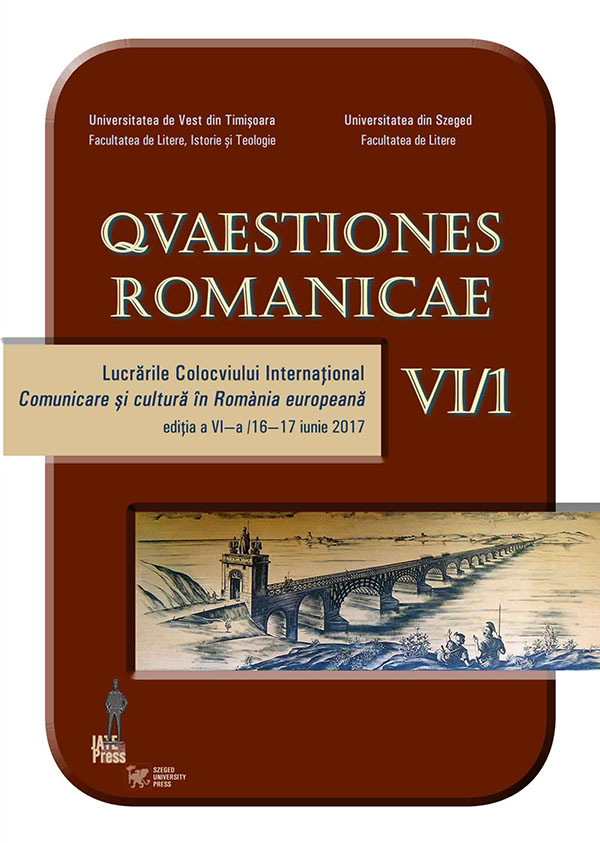Le canon et la « loi de seuil »
Abstract: (The canon and the Law of Threshold) Enter or make one’s entrance to the French Academy, to the Pantheon, to the Bibliothèque of the Pléiade, to the Petit Larousse dictionary, is, for a writer or an artist, for a work, for a word, the way to cross the threshold which gives access to the artistic canon, to the literary canon, to the linguistic canon. The notion of canon, which seems to be obvious, deserves to be examined in the light of a thought of the threshold, and from a series of oppositions: is it a system of rules or a list of works? Is it produced or deduced? Must it be looked as an axiological or ontological problem? Must the canonicity be analysed with the prospect of the Anglo-Saxon criticism - as content - or of that of Romania - as structure? In these various meanings of a word, the canon seems to obey the law of threshold: it defines at the same time a limit, and within this limit, the place and the protocol which makes possible to cross it. The canon constitutes itself by generating limits: esthetical, national, international, whether one operates divisions according to historic periods, according to States or according to geopolitical units. Who decides, how and in which places? One will thus ask which are the ways and the authors of such recognition, the spaces and instruments of canonization and the actors of the canonization, that is, the guards of the threshold. Visible or unconscious, respected or despised, followed or taken to opposite course, deliberately exceeded or without noticing it, the canons, like the thresholds, are announced by a stop, a jump, even an effort, a condition, by a passage and especially by a double transformation. As in an initiation, the one who crossed the threshold is not any more the same than previously, but the space where he entered is modified by its presence. As the subject of a short story by Borges, the canon is infinite, imperceptible, transitory, proliferating: it depends on the places, the people, the social circles, the cultures. This multiplicity culminates in a kind of obliteration of the canon in the universe of Internet and social networks, because the law of threshold, here decreased, is the one which confers to the canon its specificity, and even guarantees its existence.
Keywords: Threshold, Comparative Literature, Canonicity, Ways of literary canonization, Actors of canonization.
Résumé : Entrer ou faire son entrée à l’Académie, au Panthéon, dans la Bibliothèque de la Pléiade, dans le Petit Larousse, c’est, pour un écrivain ou un artiste, pour une œuvre, pour un mot, une manière de passer le seuil qui donne accès au canon artistique, au canon littéraire, au canon linguistique. La notion de canon, qui semble aller de soi, mérite d’être examinée à la lumière d’une pensée du seuil, et à partir d’une série d’oppositions : est-ce un système de règles ou une liste d’œuvres ? Est-il produit ou déduit ? Doit-il être regardé dans une problématique axiologique ou ontologique ? Analyser la canonicité dans la perspective de la critique anglosaxonne, comme contenu, ou de celle de la Romania, comme structure ? Dans ces différentes acceptions, le canon, qui inclut et qui exclut, qui se constitue à partir de frontières (esthétiques, nationales, internationales), semble obéir à une loi de seuil : il définit à la fois une limite et, dans cette limite, l’endroit et le protocole qui permettent de la franchir. Qui en décide, comment et dans quels lieux ? On se demandera donc quels sont les moyens et les auteurs de cette reconnaissance : les espaces et les instruments de canonisation et les acteurs de la canonisation, c’est-à-dire les gardiens du seuil. Visibles ou inconscients, respectés ou méprisés, suivis ou pris à contre-pied, qu’ils soient franchis délibérément ou sans s’en apercevoir, les canons, comme les seuils, se signalent par un arrêt, un saut, voire une condition, un passage et surtout une double transformation. Comme dans une initiation, celui qui a passé le seuil n’est plus le même qu’auparavant, mais l’espace où il est entré se trouve aussi modifié par sa présence. Tel le sujet d’une nouvelle de Borges, le canon est infini, insaisissable, transitoire, proliférant : il dépend des lieux, des peuples, des cercles sociaux, des cultures. Cette multiplicité culmine dans une sorte d’effacement du canon dans l’univers d’Internet et des réseaux sociaux, car c’est la loi de seuil, ici amoindrie, qui confère au canon sa spécificité, et garantit son existence même.
Mots-clés : Seuil, Littérature comparée, Canonicité, Instruments de canonisation littéraire, Acteurs de la canonisation.
